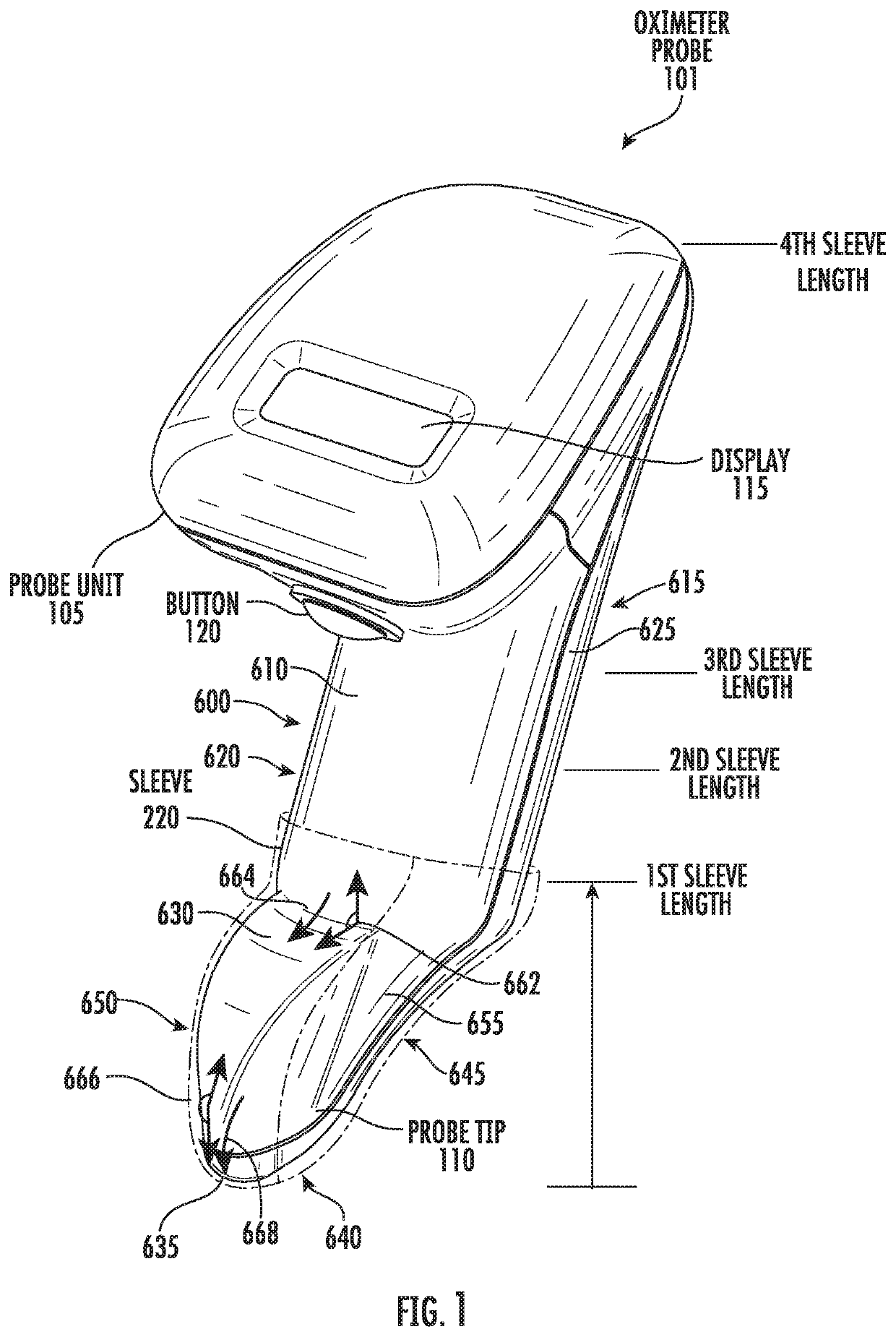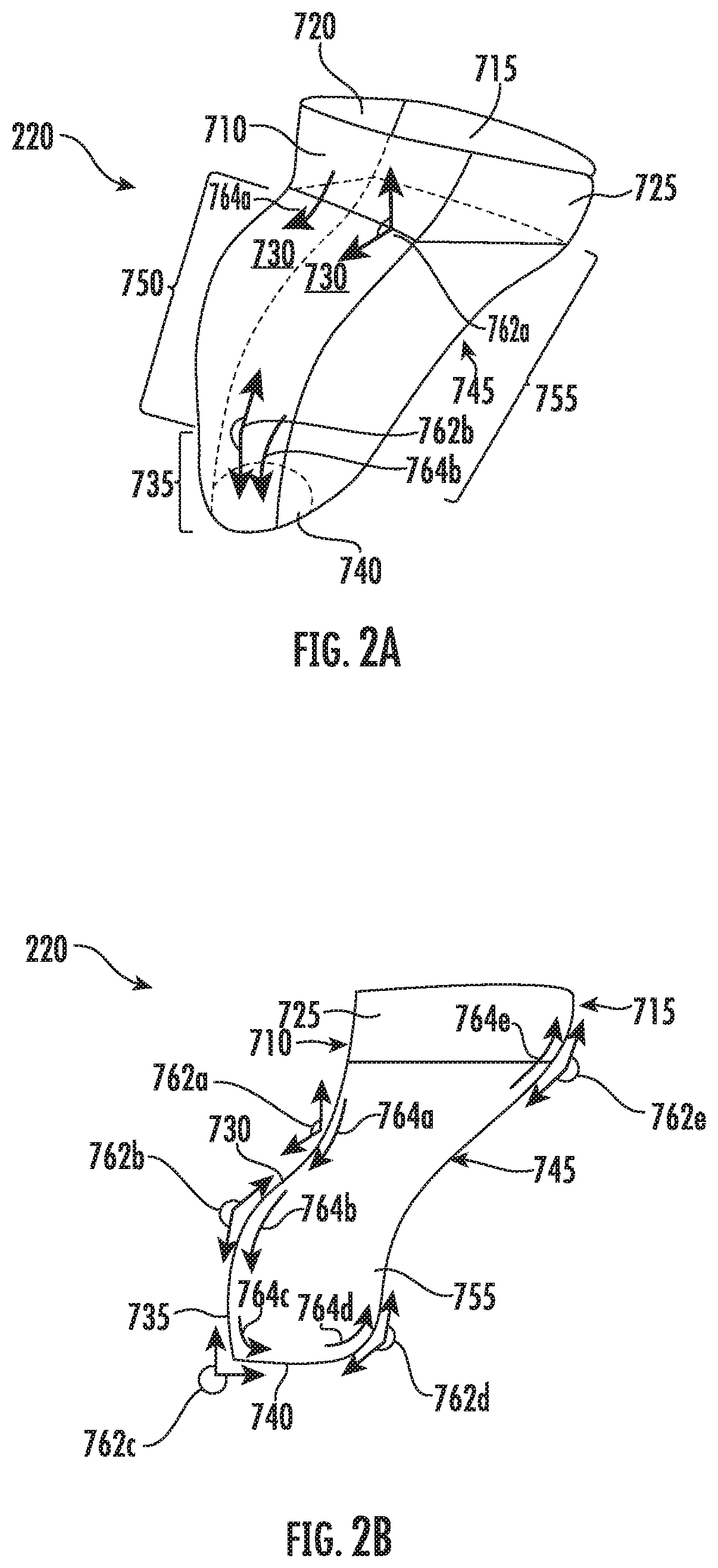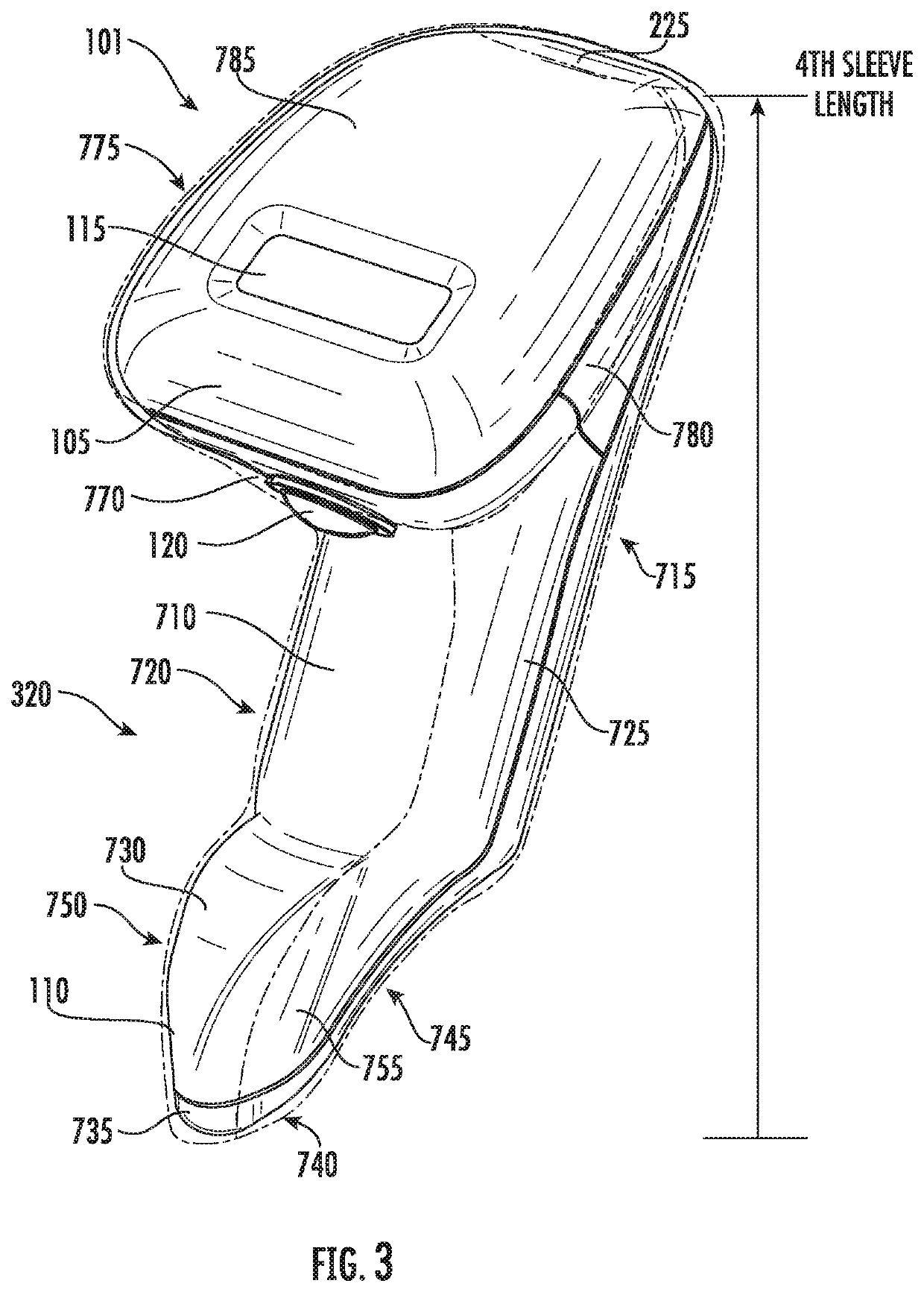Sleeve for a handheld oximetry probe
a handheld oximeter and oximeter technology, applied in the field of sleeves, can solve the problems of oximeter contamination and relatively expensive devices of oximeters
- Summary
- Abstract
- Description
- Claims
- Application Information
AI Technical Summary
Benefits of technology
Problems solved by technology
Method used
Image
Examples
Embodiment Construction
[0037]The present invention generally relates to sleeves or sheaths that cover oximeter probes or portions of oximeter probes so that the oximeter probes or portions can be reused. A sleeve acts a barrier during use for hygiene and sterility (e.g., preventing the spread of germs), while still allowing full functionality of the oximeter probe (e.g., optically transparent). The sleeve keeps patient tissue and fluid from contacting the portion of the oximeter probe covered by the sleeve. The sleeve also prevents one or more of prions, viruses, bacteria, fungus, and other biological contaminants from contacting the oximeter probe or portion. Thereby, the sleeve facilitates reuse of the oximeter probe or portion rather than disposing of the oximeter probe or portion after use.
[0038]FIG. 1 shows an oximeter probe 101. This oximeter probe is used to make oxygen saturation measurement of target tissue. In an implementation, the oximeter probe is a tissue oximeter, but in other implementatio...
PUM
 Login to View More
Login to View More Abstract
Description
Claims
Application Information
 Login to View More
Login to View More - R&D
- Intellectual Property
- Life Sciences
- Materials
- Tech Scout
- Unparalleled Data Quality
- Higher Quality Content
- 60% Fewer Hallucinations
Browse by: Latest US Patents, China's latest patents, Technical Efficacy Thesaurus, Application Domain, Technology Topic, Popular Technical Reports.
© 2025 PatSnap. All rights reserved.Legal|Privacy policy|Modern Slavery Act Transparency Statement|Sitemap|About US| Contact US: help@patsnap.com



